Abstract
Background: Fieldwork in Liberia in recent years has improved our knowledge of the local endemic species.
Objectives: To describe a new species in Bertiera to accommodate material from the south-east of Liberia that cannot be included in any known species.
Methods: Existing herbarium collections were studied, the new species was studied in the field and the relevant published literature was consulted.
Results: The new species Bertiera sinoensis is described and illustrated here based on six specimens.
Conclusions: The new species adds one more species to the botanical hotspot in south-east Liberia. It is assigned a preliminary conservation status of ‘Endangered’ (IUCN).
Introduction
Bertiera Aubl. (Rubiaceae) is a genus of ca. 55 species from Africa, including Madagascar and the Mascarenes, and from America (World Checklist of Selected Plant Families [WCSP] 2016). Recently, several new African species have been published, as well as the taxonomic revisions for Cameroon and Madagascar (Nguembou et al. 2003, 2006, 2009; Sonké et al. 2005; Wittle & Davis 2010). Recent phylogenetic research suggests that the genus is monophyletic, although less than 10% of its species have been sampled (Tosh et al. 2009).
Until now, there were only two climbing Bertiera species known, B. bracteolata Hiern and B. chevalieri Hutch. & Dalziel, and a third climbing species, B. sinoensis, is described here. The new species was first discovered in the herbarium by William Hawthorne when we were working on a guide to the forest trees, shrubs and lianes from Senegal to Ghana (Hawthorne & Jongkind 2006). Recently, several more specimens have been studied and collected in the field by the author and his team.
The area in south-east Liberia, where the new species is found is a biodiversity hotspot known to be home to several other local endemic species, most of them discovered only recently, including Napoleonaea sapoensis Jongkind (Prance & Jongkind 2015), Pauridiantha liberiensis Ntore (Ntore 2008), Pavetta sapoensis Hawthorne (Hawthorne 2013), Psychotria tetragonopus O.Lachenaud & Jongkind (Lachenaud & Jongkind 2013) and Soyauxia kwewonii Breteler & Jongkind (Breteler, Bakker & Jongkind 2015). At the moment, an important part of the forest in this area being replaced by oil palm plantations.
Research method and design
All relevant herbarium collections at the BR, K, P and WAG herbaria were examined. Bertiera sinoensis has recently been studied in the field on several occasions. Preliminary assessment of the International Union for the Conservation of Nature (IUCN) Red List categories was performed and species according to the criteria through the RBG Kew website (http://geocat.kew.org).
Taxonomic treatment
Bertiera sinoensis Jongkind, sp. nov.
Bertiera ‘nimbae’, Hawthorne & Jongkind (2006:618, 619).
Type: Liberia. Sinoe County, east of Greenville-Zwedru road, 126 m, 5°30.50’N, 8°39.31’W; forest edge. fl., fr., 26 Sept. 2013, Jongkind, de Wet & Sambolah 12157 (WAG, holo; BR, FHO, K, MO, P, iso.).
Description
Slender winding liana; twigs densely pubescent. Stipules 9–13 mm long, acuminate, sheating for 3–4 mm, pubescent. Leaves opposite, petiole 3–4 mm long, pubescent, blade oblanceolate to narrowly elliptic, 6–10 cm × 2–3.3 cm, pubescent on both sides but hairs more densely and soft to the touch adaxially, with 5–7 pairs of lateral nerves, smaller nerves invisible on both sides, base cuneate, apex shortly acuminate. Inflorescence terminal, pedunculate, up to 160 mm long, with many short, cymose branches on a much longer, straight, bracteate axis, bracts 5–9 mm long, pubescent. Flowers sessile or shortly pedicellate, hermaphrodite, 5-merous; bracteoles 4–5 mm long, up to 1 mm wide, pubescent; calyx ca. 1 mm long, with short, triangular lobes, pubescent, green; corolla tube ca. 5 mm long, green to white, pubescent outside, lobes spreading, 1.5 × 1 mm, white, pubescent at both sides, hairs on corolla ca. 0.5 mm long, corolla in bud acutely pointed; anthers included, ca. 2 mm long, subsessile, linear, with an apical connective appendage; disk equalling the calyx, annular, glabrous, fleshy; ovary 2-celled with numerous ovules. Fruit subglobose, ca. 8 mm diameter, green to white to purplish, shiny, almost glabrous with many seeds. Seeds angular, ca. 1 mm, brown (Figure 1).
 |
FIGURE 1: (a-c, e) Bertiera sinoensis. From Jongkind 12157. (a) Part of inflorescence, from several flowers, the corolla dropped and the green, glabrous disk became visible; (b) inflorescence; (c) infructescence with immature, green fruits; (d) B. bracteolata, infructescence. From Jongkind 11845; (e) leaves from B. sinoensis. |
|
Etymology
The species epithet refers to the Sinoe River that runs through the area where the new species is found.
Ecology and distribution
Bertiera sinoensis is only known from the evergreen forest in south-east Liberia (Figure 2).
 |
FIGURE 2: Map showing the geographic distribution of B. sinoensis. |
|
Diagnosis
Bertiera sinoensis resembles B. bracteolata and B. chevalieri. All three are slender woody climbers with elongated inflorescences and are the only climbing species in the genus. The leaves of B. sinoensis are much more hairy and more slender than those of the other two species, the stipules and bracteoles are longer and more hairy, and the corolla is more conspicuously hairy. Both B. bracteolata and B. chevalieri are known from both Upper and Lower Guinea (sensu White 1979), but the new species is restricted to south-east Liberia. The important taxonomic differences between these three species are summarised in Table 1.
| TABLE 1: Comparison of important taxonomic differences between B. sinoensis, B. bracteolata and B. chevalieri. |
Apart from the inflorescence branching pattern, there is very little difference between B. bracteolata and B. chevalieri, and the relationship between the two taxa in Cameroon requires investigation. Bertiera bracteolata and B. chevalieri in Lower Guinea share the faint, closed pattern of very fine parallel veinlets on the lower side of the dried leaves, a pattern not seen on the leaves of the two taxa from Upper Guinea.
The fruits of B. bracteolata are often described as strongly ribbed (Hepper 1963:158), but this is only the case when they are dry and not when they are fresh (Figure 1c-d).
Additional specimens seen
Liberia: River Cess County – Cestos-Sanguin area, Logging Concession of the Cooper’s. fr., 7 Dec. 2002, Jongkind and staff & students of the University of Liberia 5696 (BR, G, WAG). Sinoe County – African Fruit Company plantation. fl., 29 July 1977, de Gier & Goll 52 (WAG); Sapo NP, buffer zone, on short distance of the Sinoe River. fl., 28 Nov. 2002, Jongkind and staff & students of the University of Liberia 5490 (WAG); South of Sayon Town. fr., 1 Dec. 2010, Jongkind, Bilivogui & Daniels 9969 (BR, MO, K, WAG); Sinoe River bank east of Jalay’s Town. ster., 8 Feb. 2016, Jongkind & Sambolah 13051 (BR).
Conservation notes
Bertiera sinoensis is known from six locations. It is not known from protected areas but it is found close to Sapo National Park. Forest near some localities where it was previously collected has been transformed into oil palm plantations. With an extent of occurrence (EOO) of 1582 km2 and an area of occupancy (AOO) of 24 km2 (based on a cell width of 2 km), B. sinoensis is assigned a preliminary conservation status of ‘Endangered’ [EN B1b(i, ii, iii)+2b(i, ii, iii)] following IUCN Red List Categories and Criteria (IUCN 2015).
Acknowledgements
The author wishes to thank the staff of the Liberian office of Fauna and Flora International for their support for the field work. The most recent expedition on which I could study the new species was funded by the ‘Hugo de Vries Fonds’.
Competing interests
The author declares that he has no financial or personal relationships that may have inappropriately influenced him in writing this article.
References
Breteler, F.J., Bakker, F.T. & Jongkind, C.C.H., 2015, ‘A synopsis of Soyauxia (Peridiscaceae, formerly Medusandraceae) with a new species from Liberia’, Plant Ecology and Evolution 148, 409–419. https://doi.org/10.5091/plecevo.2015.1040
Hawthorne, W.D., 2013, ‘Six new Pavetta (Rubiaceae), including three “litter-bin” species from the evergreen forests of Western Africa’, Kew Bulletin 68, 559–577. https://doi.org/10.1007/S12225-013-9484-7
Hawthorne, W.D. & Jongkind, C.C.H., 2006, Woody plants of Western African forests: A guide to the forest trees, shrubs and lianes from Senegal to Ghana, Kew Publishing, Richmond.
Hepper, F.N., 1963, ‘Bertiera’, in F.N. Hepper (ed.), Flora of West Tropical Africa, pp. 158–160, 2nd edn., vol. 2, Crown Agents for Overseas Governments, London.
IUCN, 2015, IUCN Red List categories and criteria: Version 3.1, IUCN, Gland, Switzerland.
Lachenaud, O. & Jongkind, C.C.H., 2013, ‘New and little-known Psychotria (Rubiaceae) from West Africa, and notes on litter-gathering angiosperms’, Plant Ecology and Evolution 146(2), 219–233. https://doi.org/10.5091/plecevo.2013.765
Nguembou, K.C., Esono, P., Onana, J.M. & Sonké, B., 2006, ‘Un Bertiera (Rubiaceae) nouveau heterophylle du Cameroun et du Gabon’, Systematics and Geography of Plants 76, 211–216.
Nguembou, K.C., Ewedje, E.-E.B.K., Droissart, V., Stévart, T. & Sonké, B., 2009, ‘Une espèce nouvelle de Bertiera (sous-genre Bertierella, Rubiaceae) d’Afrique centrale atlantique’, Adansonia 31(2), 397–406. https://doi.org/10.5252/a2009n2a9
Nguembou, K.C., Sonké, B., Zapfack, L. & Lejoly, J., 2003, ‘Les especes camerounaises du genre Bertiera (Rubiaceae)’, Systematics and Geography of Plants 73, 237–280.
Ntore, S., 2008, ‘Révision du genre Afrotropical Pauridiantha (Rubiaceae)’, Opera Botanica Belgica 15, 227 pp.
Prance, G.T. & Jongkind, C.C.H., 2015, ‘A revision of African Lecythidaceae’, Kew Bulletin 70, 6. https://doi.org/10.1007/s12225-014-9547-4
Sonké, B., Esono, P., Nguembou, K.C. & Stévart, T., 2005, ‘Une nouvelle espece de Bertiera Aubl. (Rubiaceae) du sous-genre Bertierella decouverte en Guinee Equatoriale et au Cameroun’, Adansonia 25(2), 309–315.
Tosh, J., Davis, A.P., Dessein, S., De Block, P., Huysmans, S., Fay, M.F. et al. 2009, ‘Phylogeny of Tricalysia (Rubiaceae) and its relationships with allied genera based on plastid DNA data: Resurrection of the genus Empogona’, Annals of the Missouri Botanical Garden 96, 194–213. https://doi.org/10.3417/2006202
White, F., 1979, ‘The Guineo-Congolian Region and its relationships to other phytochoria’, Bulletin van den nationale plantentuin van België 49, 11–55. https://doi.org/10.2307/3667815
Wittle, P.M. & Davis, A.P., 2010, ‘A revision of Madagascan Bertiera (Rubiaceae)’, Blumea 55, 105–110. https://doi.org/10.3767/000651910X525259
World Checklist of Selected Plant Families (WCSP), 2016, Facilitated by the Royal Botanic Gardens, Kew, viewed 27 July 2016, from http://apps.kew.org/wcsp/
|